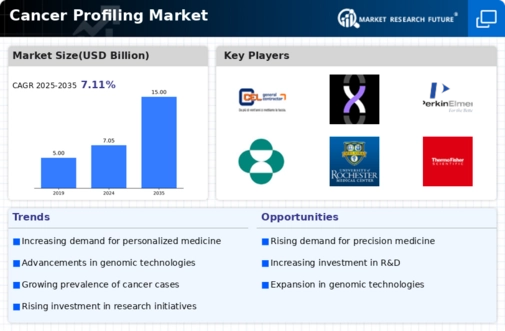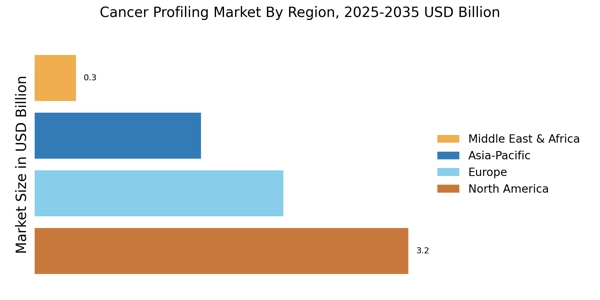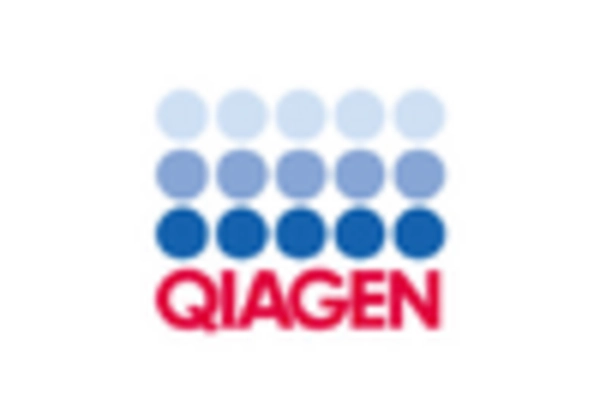Increasing Incidence of Cancer
The rising incidence of cancer worldwide is a primary driver for the Cancer Profiling Market. According to recent statistics, cancer cases are projected to increase significantly, with estimates suggesting that by 2040, there could be over 27 million new cancer cases annually. This alarming trend necessitates advanced diagnostic tools, including cancer profiling, to facilitate early detection and personalized treatment strategies. As healthcare systems strive to manage this growing burden, the demand for cancer profiling technologies is likely to surge. The Cancer Profiling Market is thus positioned to expand as healthcare providers seek innovative solutions to improve patient outcomes and reduce mortality rates associated with various cancer types.
Government Initiatives and Funding
Government initiatives and funding aimed at cancer research and treatment are significantly influencing the Cancer Profiling Market. Various countries have launched national cancer control programs that prioritize early detection and personalized treatment approaches. For example, substantial investments in cancer genomics research have been made to enhance understanding of cancer biology and improve therapeutic strategies. These initiatives not only foster innovation within the Cancer Profiling Market but also encourage collaboration between public and private sectors. As funding continues to flow into cancer research, the market is likely to experience accelerated growth, driven by the development of novel profiling technologies and methodologies.
Advancements in Biomarker Discovery
Recent advancements in biomarker discovery are propelling the Cancer Profiling Market forward. The identification of specific biomarkers associated with different cancer types enables more accurate diagnosis and targeted therapies. For instance, the development of liquid biopsy techniques has revolutionized cancer detection, allowing for non-invasive sampling of tumor DNA. This innovation not only enhances the precision of cancer profiling but also aligns with the growing trend towards personalized medicine. As research continues to unveil new biomarkers, the Cancer Profiling Market is expected to witness substantial growth, driven by the increasing need for tailored treatment options that improve patient prognosis.
Growing Awareness of Precision Medicine
The increasing awareness of precision medicine among healthcare professionals and patients is a crucial driver for the Cancer Profiling Market. As more individuals recognize the benefits of personalized treatment plans tailored to their genetic makeup, the demand for cancer profiling services is expected to rise. Educational campaigns and advocacy efforts have played a significant role in promoting the importance of genetic testing and profiling in cancer care. This heightened awareness is likely to lead to greater adoption of cancer profiling technologies, as patients seek out personalized treatment options that align with their unique genetic profiles, thereby propelling the Cancer Profiling Market forward.
Technological Innovations in Cancer Profiling
Technological innovations in cancer profiling are reshaping the landscape of the Cancer Profiling Market. The integration of next-generation sequencing (NGS) and advanced bioinformatics tools has enhanced the accuracy and efficiency of cancer profiling. These technologies enable comprehensive genomic analysis, allowing for the identification of mutations and alterations that drive cancer progression. As the cost of sequencing continues to decrease, access to cancer profiling services is likely to expand, making it more feasible for healthcare providers to implement these advanced diagnostic tools. Consequently, the Cancer Profiling Market is poised for growth as technological advancements facilitate the development of more effective and personalized cancer therapies.


















Leave a Comment